ODDO Architects describe Hanoi as a city dense with people, traffic, and air pollution. They say it lacks parks and public spaces, but it’s strong in Vietnamese culture and tradition. In 2019, they designed the CH House for a family of six spanning three generations, drawing on tradition to create a tranquil refuge in the middle of the bustling city.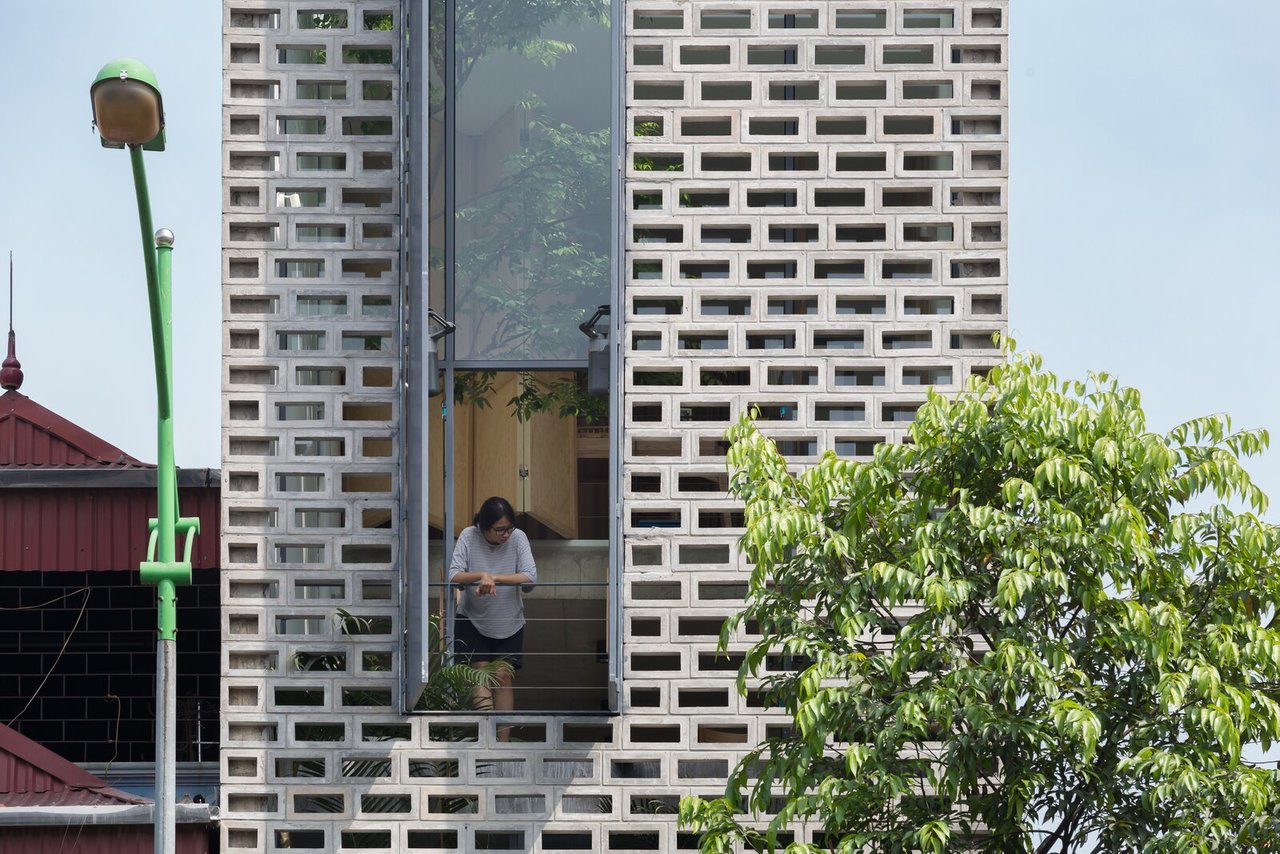
A window breaks up the street-facing facade composed of perforated cement blocks.
The project started with "a typical plot for long and narrow local tube houses," says the firm. The site allotted them enough space for a home measuring just under 14 feet wide and 114 feet deep. In order to admit enough light and air flow into such a long and narrow footprint, the firm drew inspiration from traditional Hanoi houses with interior courtyards.

From inside, a view of the steel-and-glass framework behind the cement blocks, which ensures light flows through the narrow home. Glass panels open to increase airflow, and an integrated planter fosters foliage.
To create that same courtyard effect across the elongated, five-level plan, the firm formed empty voids by stepping the various floor plates. The volumes are capped with sections of clear roofing (notably where stairs are located) that allows light to cascade deep into the center of the home. "This design makes the space properly open, and provides an unexpected spacious feeling, despite the limited width of the house," says the firm.
On the exterior, a perforated cement block screen overlays an internal framework of steel and glass. Opening the glass panels allows air to flow throughout the entire house. Exterior terraces (one is located at the rooftop) offer even more access to the outdoors.
Inside, integrated planters are interspersed at every level of the home. Filled with trees, trailing vines, and clusters of tropical houseplants, the planters offer a lush green contrast to the spare material palette, and the plants cast a tranquil effect. 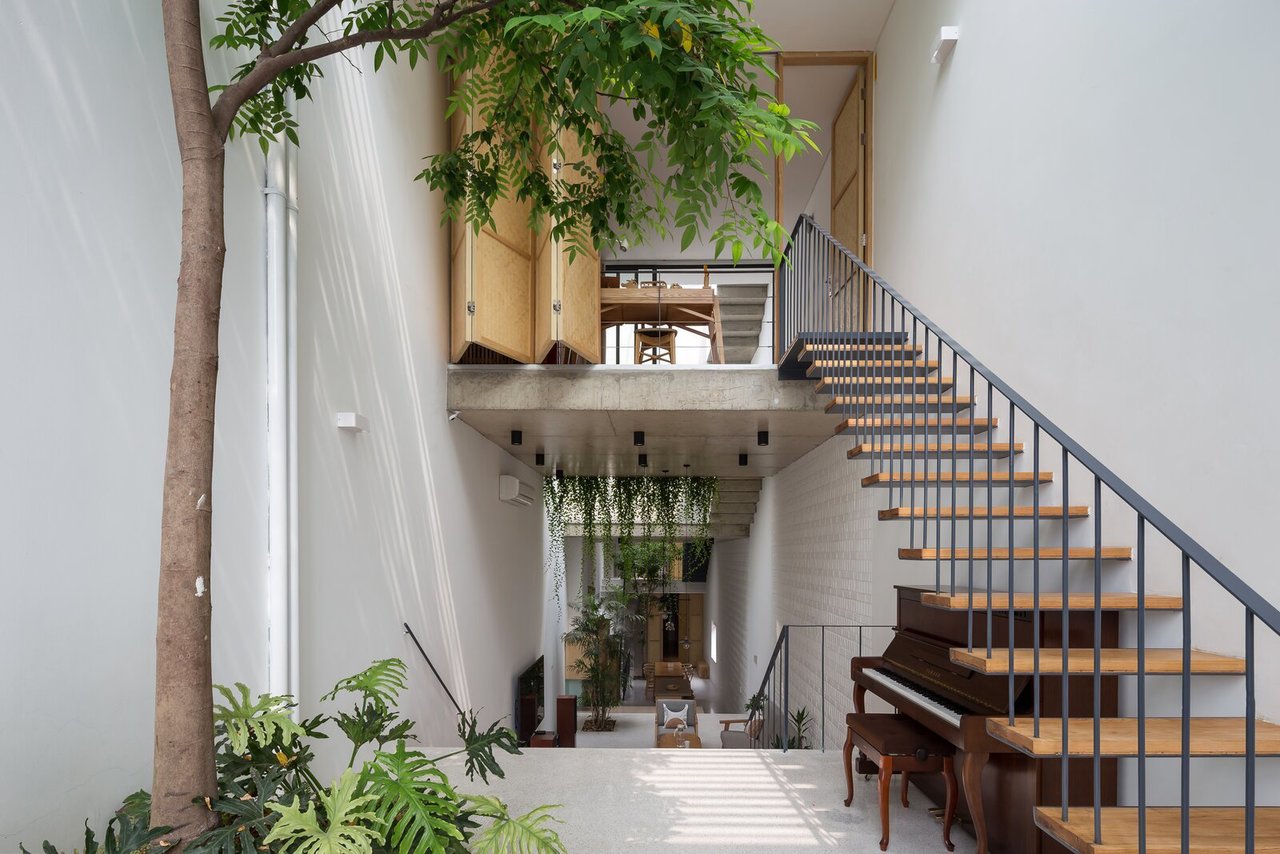
At just under 14 feet wide, the CH House could have felt cramped. But the architects created empty volumes within the plan to make it feel more spacious and airy. Standing in the double-height library, where there’s enough vertical space for a tree to grow, one can see down into the shared living areas and up into a kid’s bedroom at the fifth floor.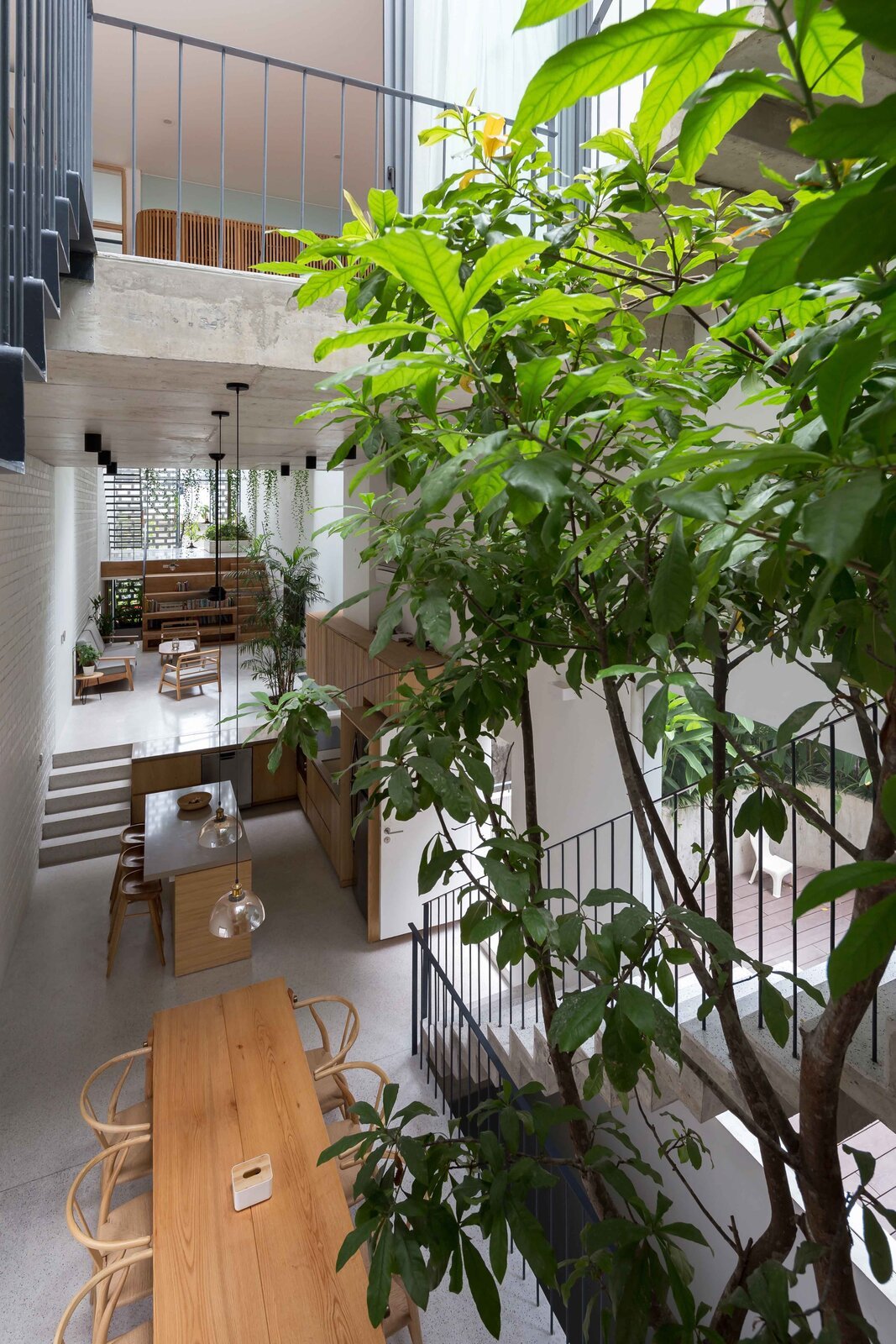
Staggered floor and ceiling heights maintain sight lines into the different rooms in the home.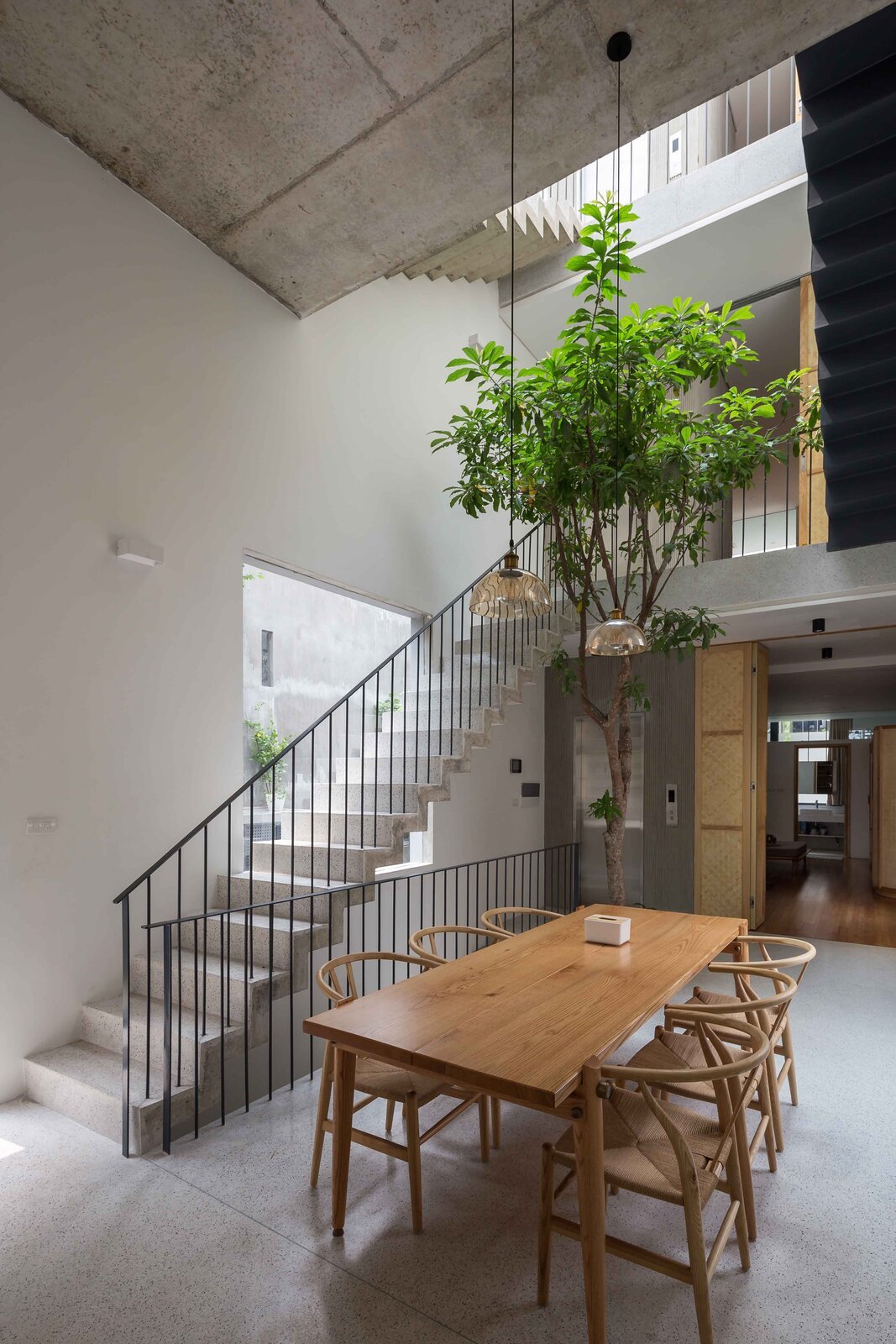
Natural light cascades over the stairwells to reach the tree growing in the dining room.
"Nature is an important element that provides a positive effect on people’s mental health," notes the firm. "However, the rapid development of large cities has resulted in a lack of green spaces for people to relax. That is why planting trees and plants inside the house is necessary-and it helps create a peaceful living space to release stress."
The constrained material palette-from the cast concrete stairs and minimal metal railing, to the simple wood accents-further instills a sense of tranquility.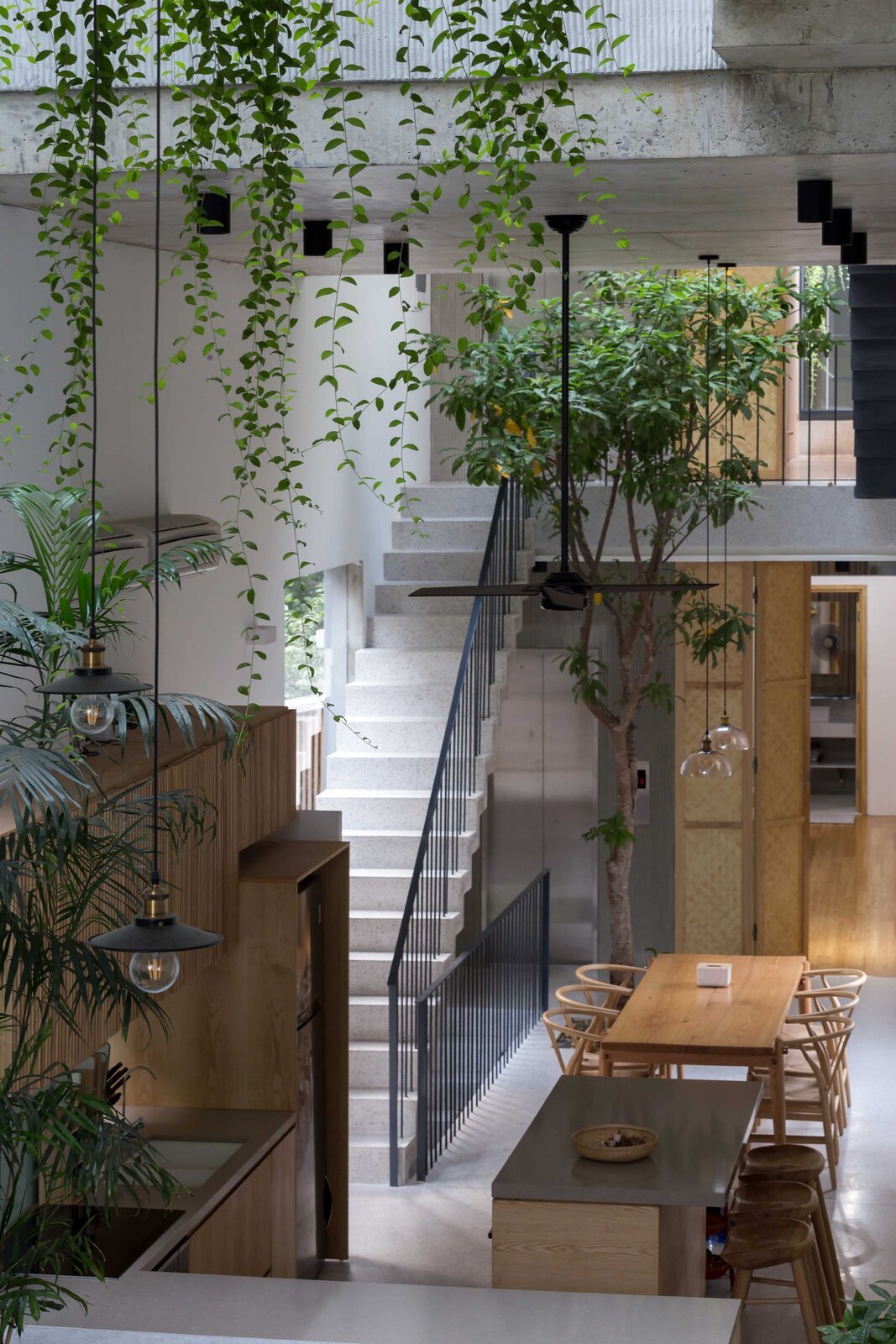
The double-height volume over the kitchen and living room creates an airy feel. An elevator provides an alternate way to ascend to the upper levels.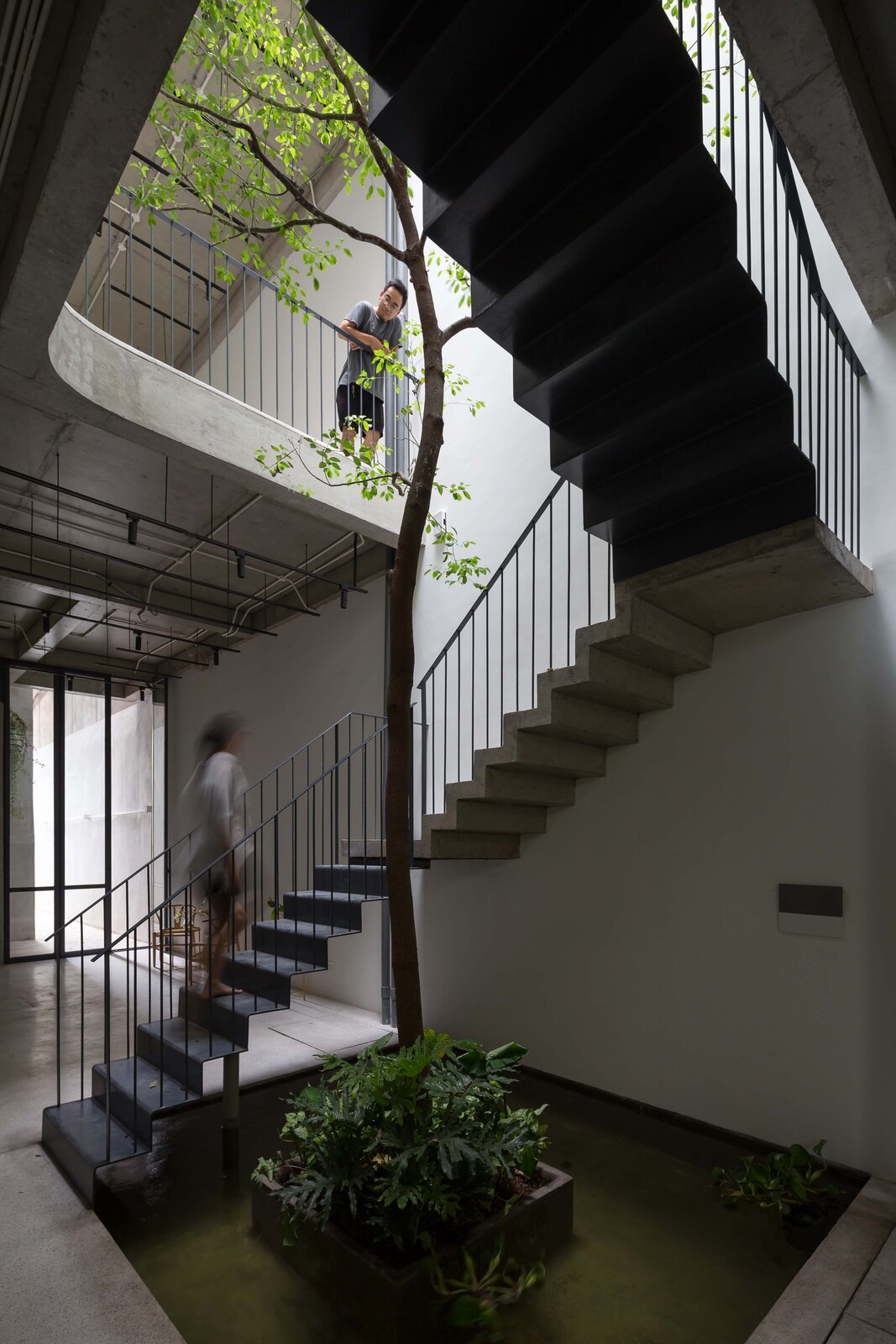
At the first floor, a water garden sits in an integrated basin. Folded metal stairs climb above the water’s surface.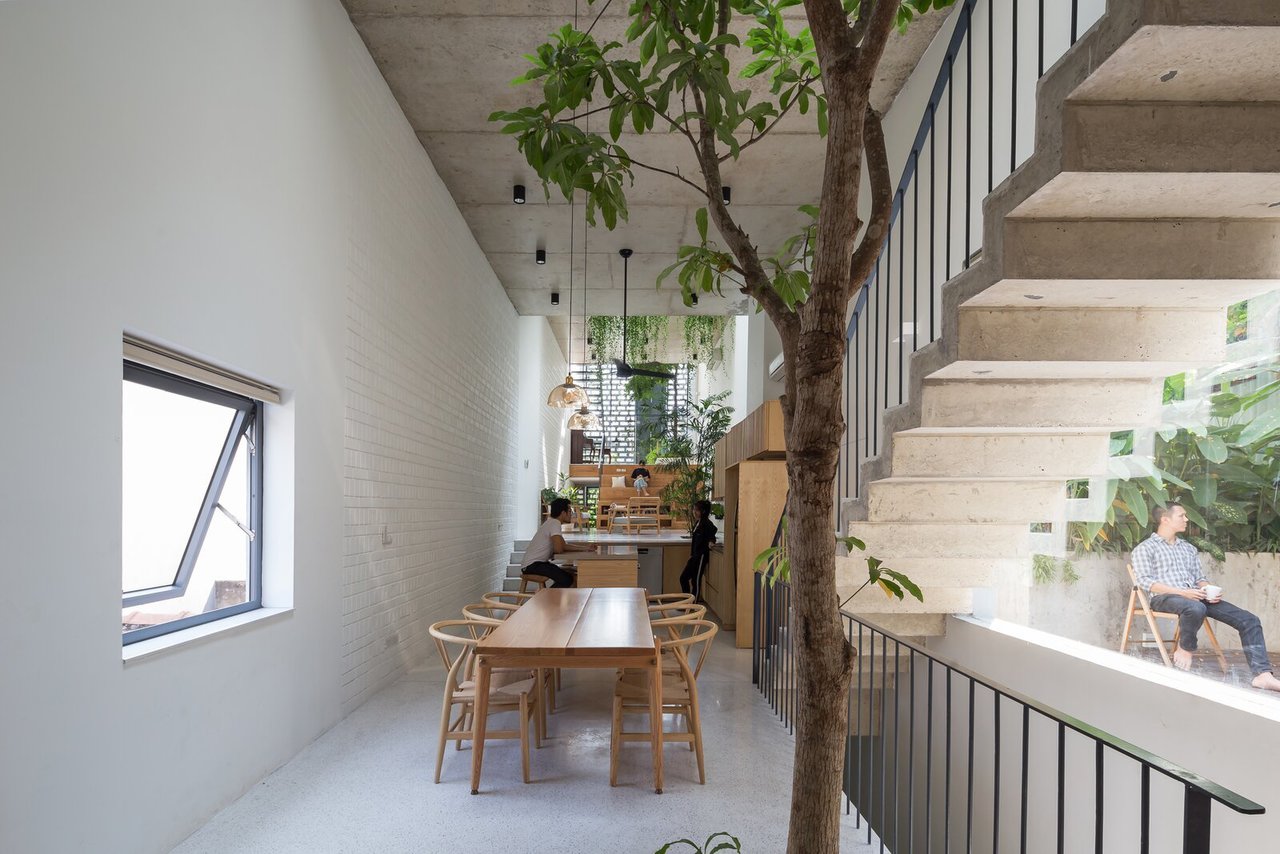
An exterior terrace lies just off the main living spaces on the third floor. It can be seen through the window at the stairs.
The five-level floor plan is divided into two zones, with a commercial business occupying the lower two levels. The staggered floor and ceiling heights create intimacy in the private quarters and a sense of openness in the main living spaces.
"The common spaces of the family area (such as the living room, library, dining room, and kitchen) are positioned at different levels with varying ceiling heights in order to compose an open, continuous space that facilitates ease of communication among the family members," explains the firm.
The stepped wooden platforms provide built-in seats for the library. Down the stairs to the left is a guest room.
After all, the firm’s ultimate goal was to create an urban refuge where the family could slow down, rest, and more easily connect with one another. "In the world of modern technology, with smart phones and televisions, family ties are weakened," says the firm. "The space design emphasizes connections among the family members, especially in the context of today’s hurried lifestyle."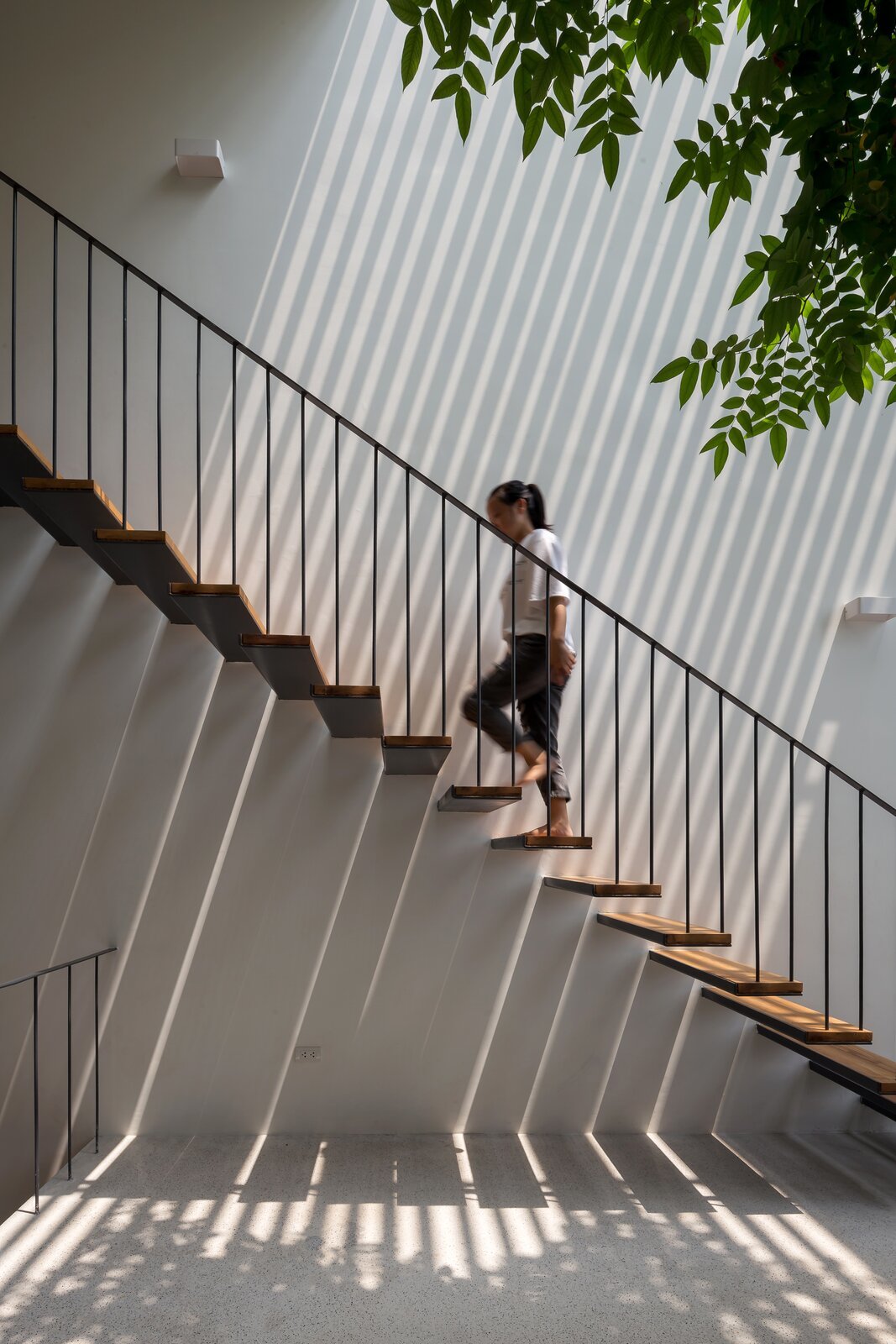
Dappled shadows are cast by the exterior concrete screen and the cantilevered tread at the stairs.
The fifth-floor kid’s bedroom is made to feel more cozy with wood flooring and folding wooden screens, the latter of which facilitate privacy or connection to the main spaces.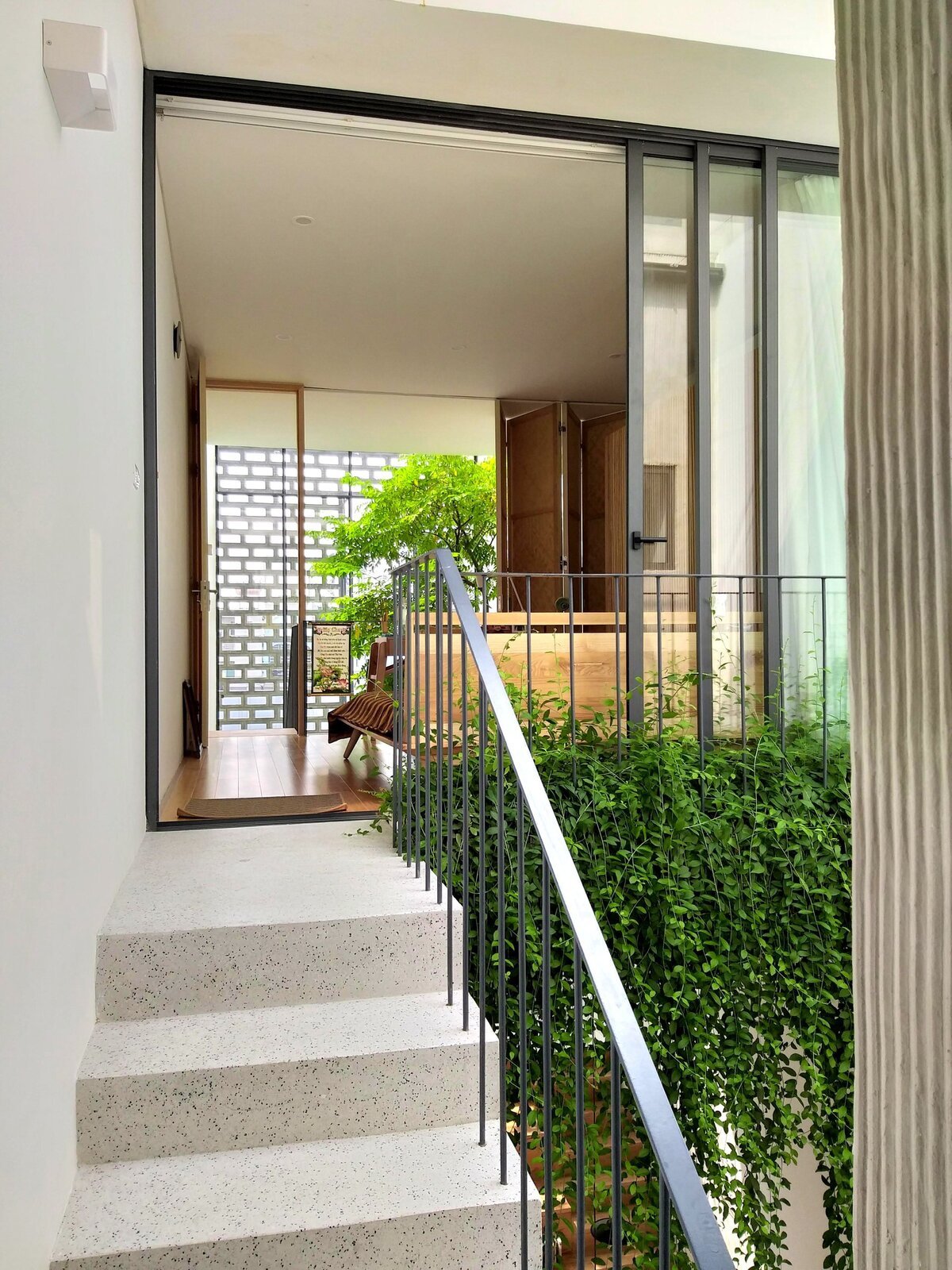
Stairs lead from the kid’s room to a washroom, and trailing vines spill into the void.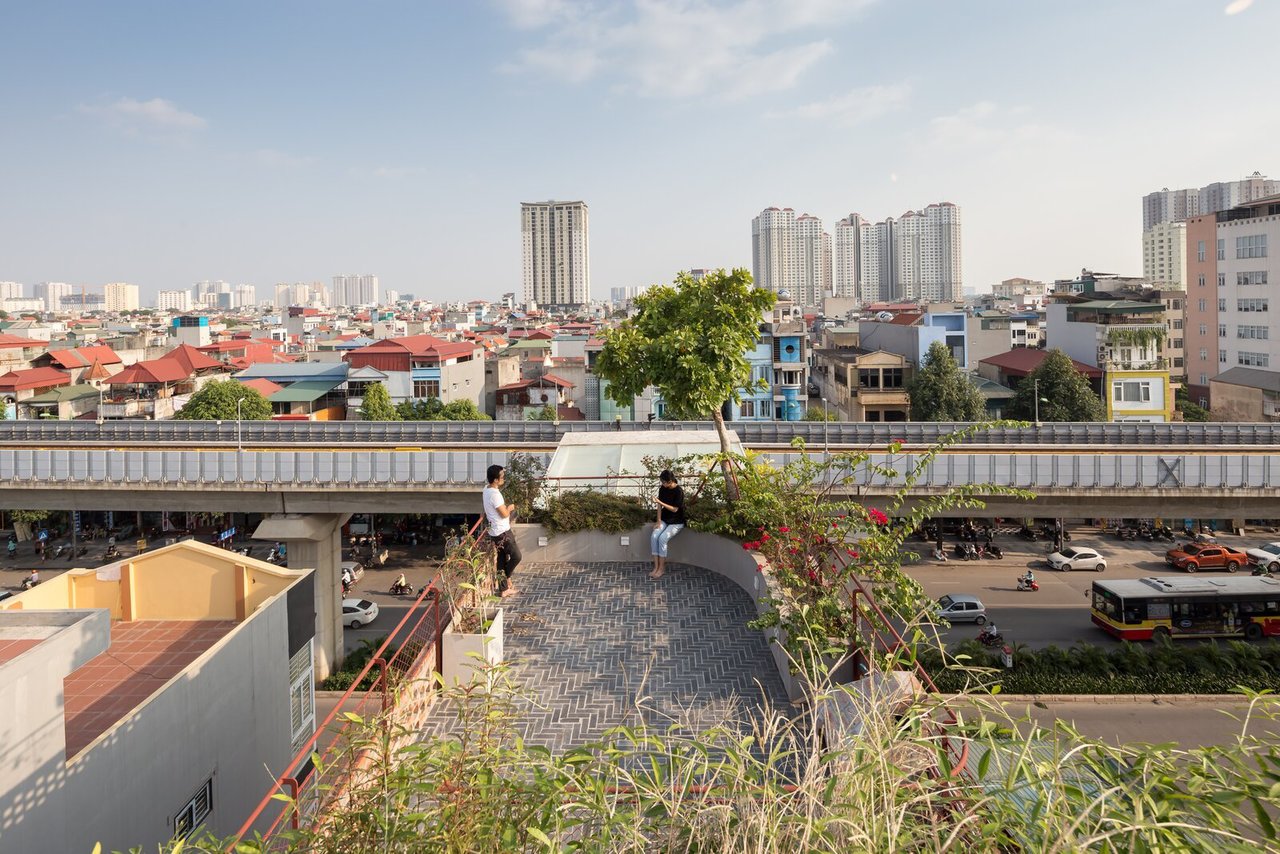
The rooftop terrace has an incredible view of the surrounding city.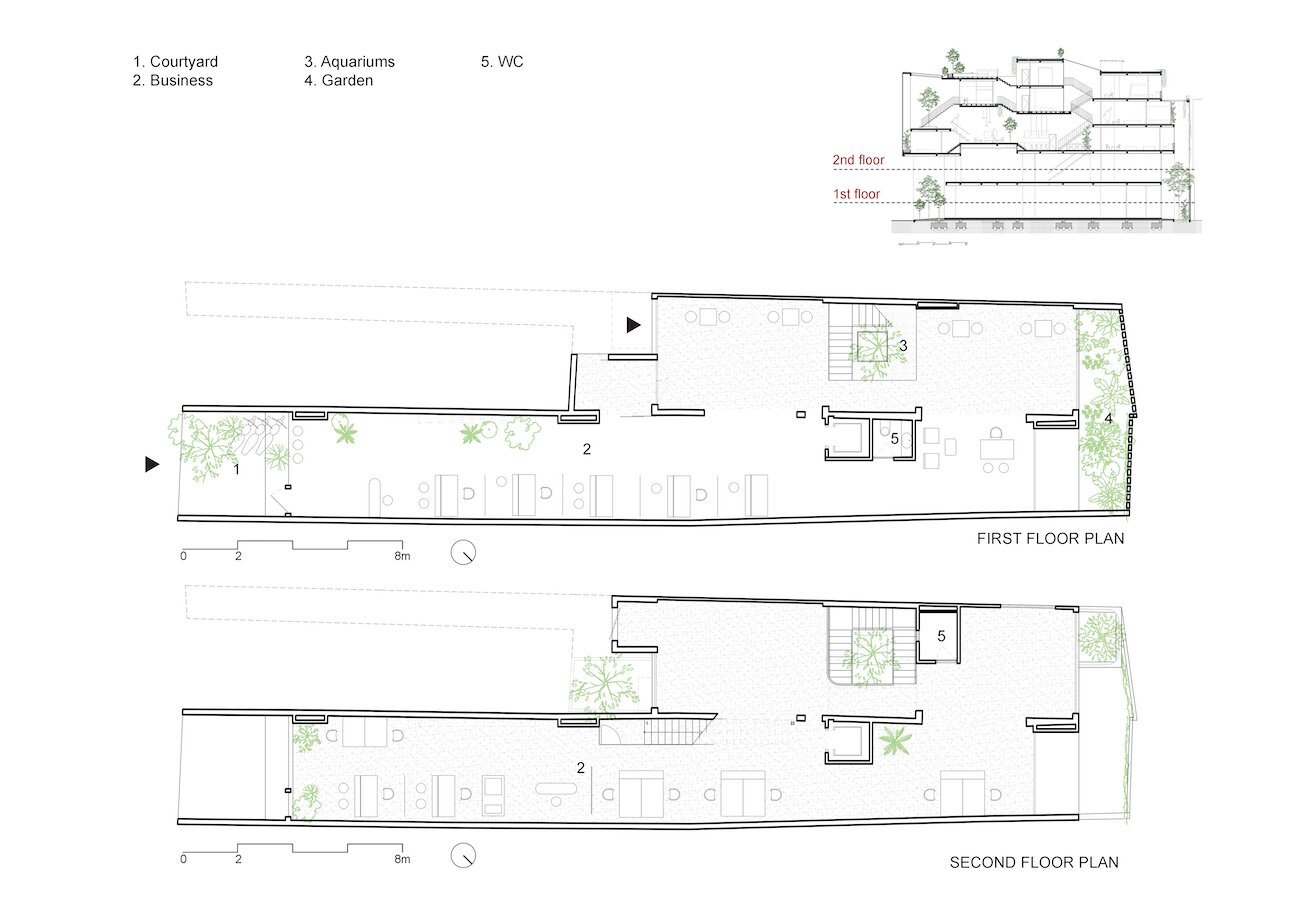
CH House first- and second-level floor plans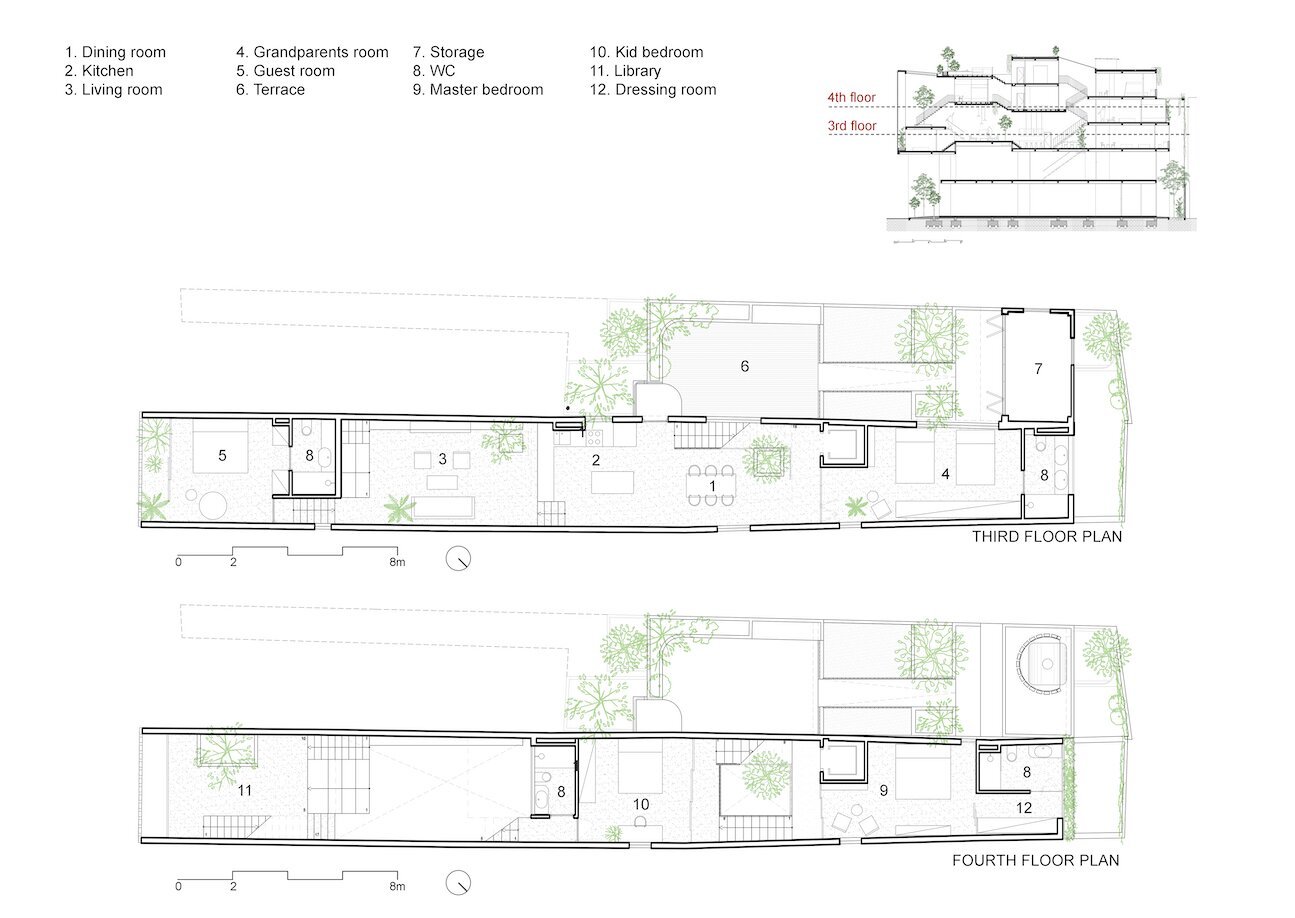
CH House third- and fourth-level floor plans.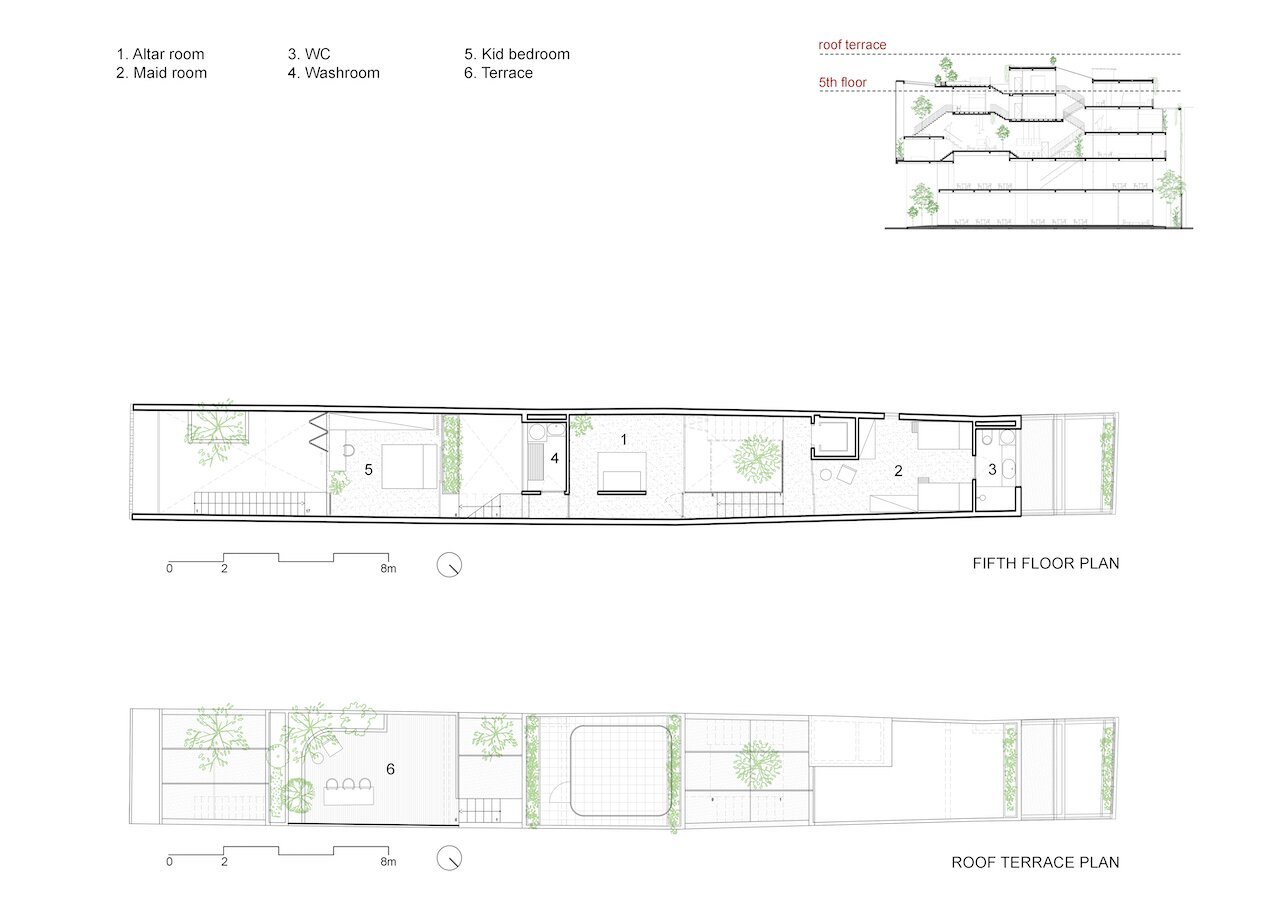
CH House fifth-level and roof floor plans.

Tropical Boho Homes With Beautiful Vignettes & Vistas
Two tropical boho home designs, featuring swimming pools, cozy lighting schemes, interior archways, natural accents, and beautiful decor vignettes.


![A Tranquil Jungle House That Incorporates Japanese Ethos [Video]](https://asean2.ainewslabs.com/images/22/08/b-2ennetkmmnn_t.jpg)









